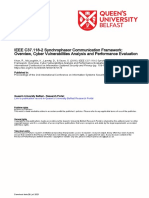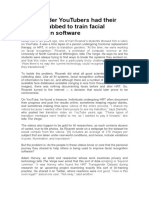0% found this document useful (0 votes)
36 views4 pagesChapter 1summary Request
Chapter 1 introduces computer networking, emphasizing its importance in IT careers and using the Internet as a foundational example. It covers key concepts such as the structure of the Internet, the role of protocols, and the distinction between network edge and core. Additionally, it discusses performance metrics and the layered architecture of networking models like OSI and TCP/IP.
Uploaded by
Rana Ben FrajCopyright
© © All Rights Reserved
We take content rights seriously. If you suspect this is your content, claim it here.
Available Formats
Download as PDF, TXT or read online on Scribd
0% found this document useful (0 votes)
36 views4 pagesChapter 1summary Request
Chapter 1 introduces computer networking, emphasizing its importance in IT careers and using the Internet as a foundational example. It covers key concepts such as the structure of the Internet, the role of protocols, and the distinction between network edge and core. Additionally, it discusses performance metrics and the layered architecture of networking models like OSI and TCP/IP.
Uploaded by
Rana Ben FrajCopyright
© © All Rights Reserved
We take content rights seriously. If you suspect this is your content, claim it here.
Available Formats
Download as PDF, TXT or read online on Scribd
/ 4



































































































